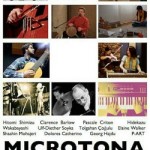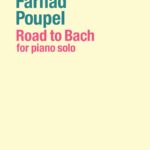
3/1/2/5: When the first finger lands next to the nut, continuation of first phalange of this finger, on back of the hand, should be in line with continuation of the back of the wrist and the left hand; moreover, it should not pass them and bend at knuckles. Otherwise, an uncommon stretch is created in first finger’s knuckle also reducing the freedom of other fingers (especially the fourth finger) in finger placement.
In a position which requires that only the first finger move backward and land next to the nut, we should avoid moving all parts of left hand backward and move backwards only this finger.
It is worth mentioning that this case should not be taken by mistake with the position in which the whole left hand moves backward and is installed in half-position, before the first position (such as playing G b major Scale in first position)
NB 15: In order to transmit a finger between two neighbor finger postions, necessary time for this transmission consumes the time of a note which is to change. For example, in playing G-Sharp immediately after G-Natural with second finger in first position of E string, time utilized for replacement is taken from G-Sharp.
3/1/2/6 : As we need to pressure our fingers against the finger board while playing and this happens permanently while playing, so it is required to pay attention to the amount of finger pressure and the manner of inserting this pressure during finger placement.
A: Amount of finger pressure
Unnecessary pressure on the fingerboard causes pain in hand and early fatigue in player while practicing. On the other hand, given the natural shape of fingers and physical specifications of violin, the amount of this pressure on the fingerboard is not the same.
It is required to consider the following points in finger placement:
1- In normal state of playing on a string, especially on lower positions, it is not required to exert extra and unnecessary force on fingers.
It should be noted that sometimes an apprentice presses his left finger against the fingerboard by mistake instead of exerting vertical pressure on bow in order to get stronger voice from the violin. In this way he wastes his energy through his left hand.
2-Noramlly, this amount of pressure varies with each fingers and depends on the length and physical dimensions of each different finger (for example, the fourth finger is shorter and naturally smaller in comparison to other fingers so it is normal that it is considered as a smaller arm to transmit the force.)
3- Naturally the higher the left hand positions, the more critical becomes finger placement (because of the influence of the shape of the instrument and the mutual relationship between the hand and the fingerboard). Also vertical distance between string and the fingerboard increases (and this distance reaches its highest rate in final left hand positions of violin.)
Therefore necessary pressure for finger placement in higher left hand positions differs from that needed in lower positions.
Proper Placement of First Finger (in distance of Half-step from nut)
False Shape of First Finger Placement (in distance of Half-step from nut)
Proper Placement of First Finger (in distance of Whole-tone from nut)











